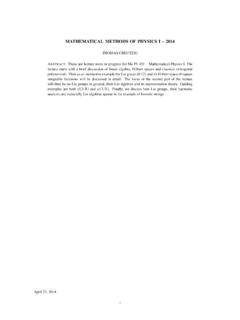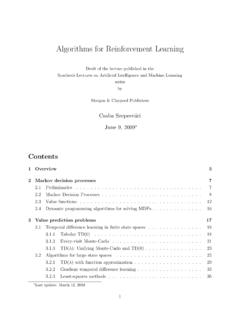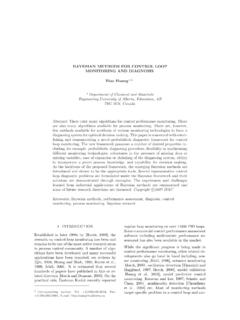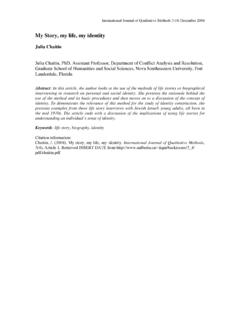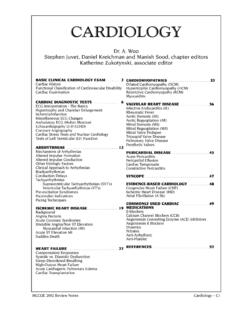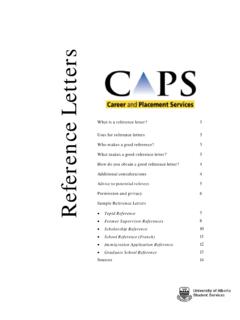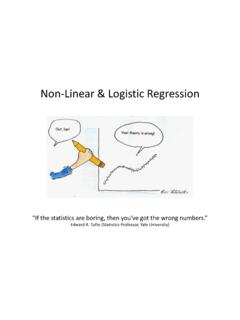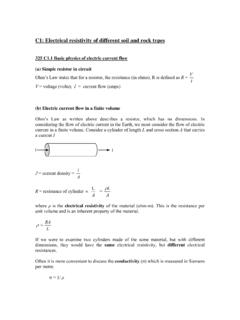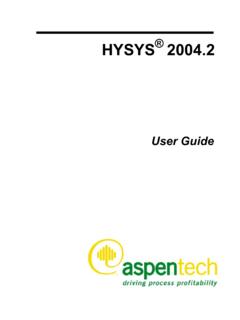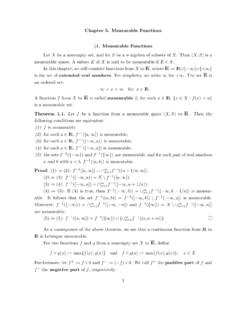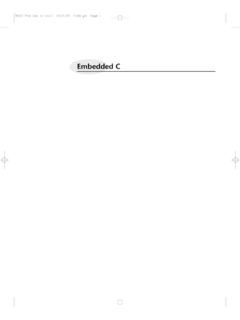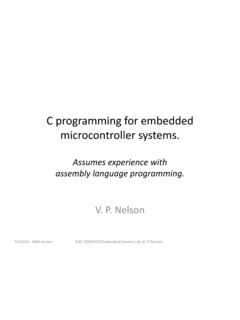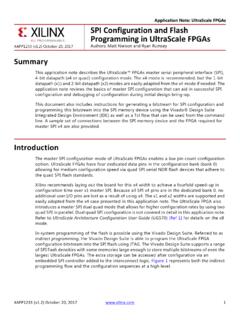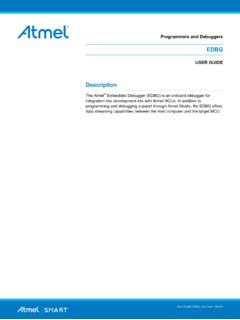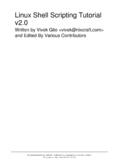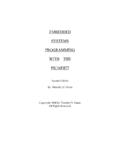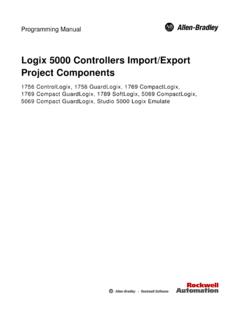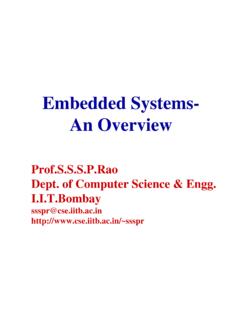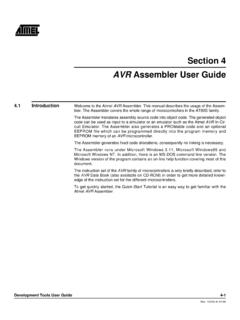Transcription of The C Cheat Sheet - University of Alberta
1 The C Cheat SheetAn Introduction to Programming in CRevision 2000 Andrew SterianPadnos School of EngineeringGrand Valley State UniversityThe C Cheat SheetRevision 5, 2000iiCopyright 2000 Andrew SterianThe C Cheat SheetRevision 5, 2000 Copyright 2000 Andrew SterianiiiTABLE OF The main() Include The The #define The #include The #ifdef/#else/#endif More Predefined Basic Data Signed Integer Unsigned Integer Integer Real Data BCC32 The void Control The if/else/endif Compound Nested if The switch/case The for The while The do/while The break The continue The goto The return Expressions and Basic Arithmetic Promotion and More Arithmetic Assignment Bitwise Relational Logical The Conditional C Cheat SheetRevision 5.
2 2000 Copyright 2000 Andrew The Comma Operator Precedence and Program Declaring Calling Local Global Advanced Data String String Enumerated Advanced Programming Standard Opening Writing to File Reading from File The stdin/stdout/stderr Dynamic Memory Memory Declaring New Pointers to Command-Line Multi-File Basic Include Files as Object Files and The Details of the Compilation The Standard C Assertion Character Error Buffer Non-Local Event Variable-Length Argument Miscellaneous String Time Floating-Point C Cheat SheetRevision 5, 2000 Copyright 2000 Andrew Standard Tips, Tricks, and Infinite Unallocated The Null Extraneous strcmp is Unterminated Equality and Assertion Error Programming Differences between Java and C Cheat SheetRevision 5, 2000 Copyright 2000 Andrew Sterian1 PREFACEThis document is an introduction to the C programming language.
3 Unlike a thorough reference manual this document is limited in scope. The main goal is to provide a roadmap that can answer basic questions about the language, such as what data types are supported or what a for loop looks like. The beginning C programmer can use this document to get started with the language and write small-to-medium-size programs involving simple I/O, file manipulation, and arithmetic document relies heavily on examples to teach C. Examples allow the reader to quickly grasp the concept being presented but do not allow for a thorough explanation. This is consistent with the philosophy that this document is an entry point to the language, not a reference text. When questions arise that cannot be answered here, the reader is directed to three very useful resources: The on-line documentation that comes with the reader s C compiler.
4 This reference documentation thoroughly describes both the language structure and the library com-ponents. The classic textbook The C Programming Language , 2nd edition, by Kernighan & Ritchie. Written by the architects of the C language, this text was published in 1988 but has endured as both a reference and as a tutorial. The more recent text C: A Reference Manual , 4th edition, by Harbison & Steele. This text, as its name implies, is mostly a reference, not a tutorial, but it includes some of the latest changes in the language , note that C, like spoken languages, does evolve with time. Even though it is the most mature of the three major system development languages currently in favor (C, C++, and Java) international standards committees continue to try to improve its character.
5 For example, issues of internationalization have led to improved support for multi-byte character strings, a concept not formally part of the C language. A new proposal for the C standard has been submitted by the ISO as of December 1999. Your compiler s documentation is the last word on compliance with the most recent is assumed that the reader is familiar with programming concepts in general and may also be familiar with the Java programming language. The core Java language design was heavily influ-enced by the C language and the look and feel of a C program at the syntactic level will be quite familiar to Java programmers. Differences in the two languages are highlighted throughout this document (also see the summary in Section ).
6 The C Cheat SheetRevision 5, 20002 Copyright 2000 Andrew IntroductionA C program may occupy as few as 5 lines in a single file. Here is the venerable Hello world! program in the file 1:#include < >void main(void) {printf( Hello world!\n );}This text file (known as the source code) is compiled to an executable file using a C compiler. For example, using the Borland BCC32 program:bcc32 the program prints Hello world! on the screen (in a console window).Java programmers may recognize the main() method but note that it is not embedded within a class. C does not have classes. All methods (simply known as functions) are written at file The main() FunctionThe main() function is the starting point of the program.
7 All C programs must have a main() function. While this function can be written as in the example above (but see footnote 1), it is most often written with the following prototype (or signature):int main(int argc, char *argv[])While we may not quite understand all of the above, there are a few points to note: The return type of the main() function is an integer (type int). The value returned by the main() function is known as the return value of the program. Traditionally, a return value of 0 indicates that the program executed successfully while a non-zero value indicates an error condition. In many cases, we are not concerned with this return value and it is simply ignored. The parameters of the main() function (argc and argv) allow the C program to process command-line parameters.
8 We will discuss this further in Section after we have introduced character C practitioner has declared that the author of any document which writes void main(void) ..doesn't know or can't be bothered with learning, using, and writing about the actual languages defined by their respective International Standards. It is very likely that the author will make other subtle and not-so-subtle errors in the book. Indeed, the C standard says that the main function must always return an integer. But this is not a document describing a standard; it s simply here to kick-start the learning pro-cess. Nonetheless, be on the lookout for subtle and not-so-subtle errors!JThe C Cheat SheetRevision 5, 2000 Copyright 2000 Andrew Sterian3 The main() method in Java has the prototype main(String[] args) which provides the program with an array of strings containing the command-line parameters.
9 In C, an array does not know its own length so an extra parameter (argc) is present to indicate the number of entries in the argv Include FilesThe first line of our example program:#include < >inserts the contents of a file (in this case, a file named ) into the current file, just as if you had cut and pasted the contents of that file into your source code. The purpose of these files (known as include files or header files) is to tell the compiler about the existence of external func-tions which the source code will make use this case, the file defines the function printf() which we use to print text to the screen. Without including this file, the compiler would generate an error when it encountered the printf() function in the source code since this function is not a part of the core file defines many other functions, all related to the Standard I/O component of the standard C library.
10 We will discuss standard I/O in more detail in Section and the concept of libraries in Section While the standard C library is not part of the core C language, it is dis-tributed with the C compiler (along with many other libraries) and is actually a part of the C lan-guage users may see the similarity between the #include statement and Java s import state-ment. Both serve the same purpose, to pull in external components for use by the given WhitespaceThe C language generally ignores whitespace ( , spaces, blank lines, tabs, etc.). The Hello world! program could have been written more succinctly (and illegibly) as:#include < >void main(void){printf( Hello world!\n );}The only cases where whitespace is significant are in preprocessor statements (such as the #include statement; see Section below for more details on the preprocessor) and within character strings, like Hello world!
